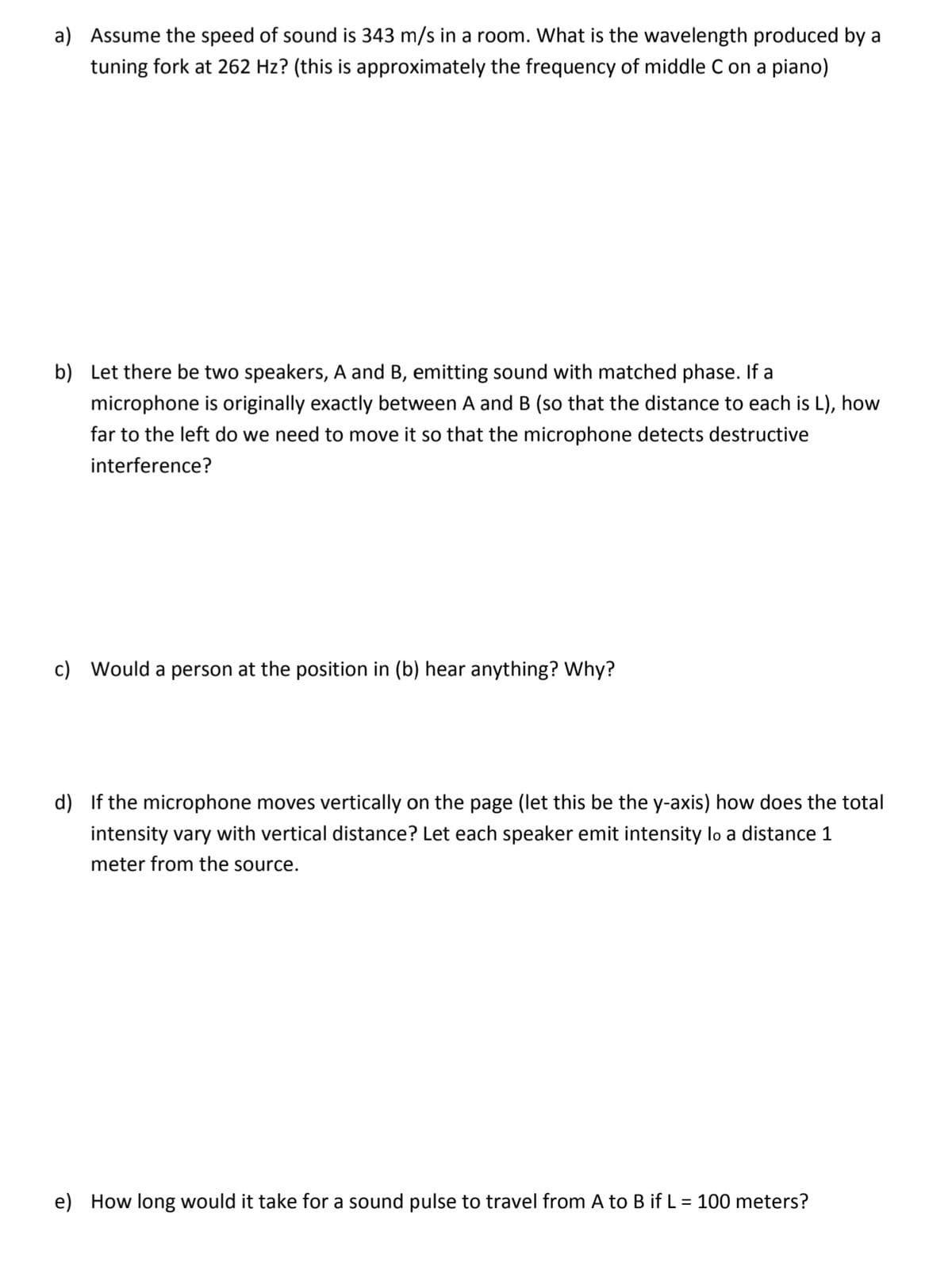a) Assume the speed of sound is 343 m/s in a room. What is the wavelength produced by a tuning fork at 262 Hz? (this is approximately the frequency of middle C on a piano)
a) Assume the speed of sound is 343 m/s in a room. What is the wavelength produced by a tuning fork at 262 Hz? (this is approximately the frequency of middle C on a piano)
Related questions
Question

Transcribed Image Text:a) Assume the speed of sound is 343 m/s in a room. What is the wavelength produced by a
tuning fork at 262 Hz? (this is approximately the frequency of middle C on a piano)
b) Let there be two speakers, A and B, emitting sound with matched phase. If a
microphone is originally exactly between A and B (so that the distance to each is L), how
far to the left do we need to move it so that the microphone detects destructive
interference?
c) Would a person at the position in (b) hear anything? Why?
d) If the microphone moves vertically on the page (let this be the y-axis) how does the total
intensity vary with vertical distance? Let each speaker emit intensity lo a distance 1
meter from the source.
e) How long would it take for a sound pulse to travel from A to B if L = 100 meters?
Expert Solution
This question has been solved!
Explore an expertly crafted, step-by-step solution for a thorough understanding of key concepts.
This is a popular solution!
Trending now
This is a popular solution!
Step by step
Solved in 3 steps
